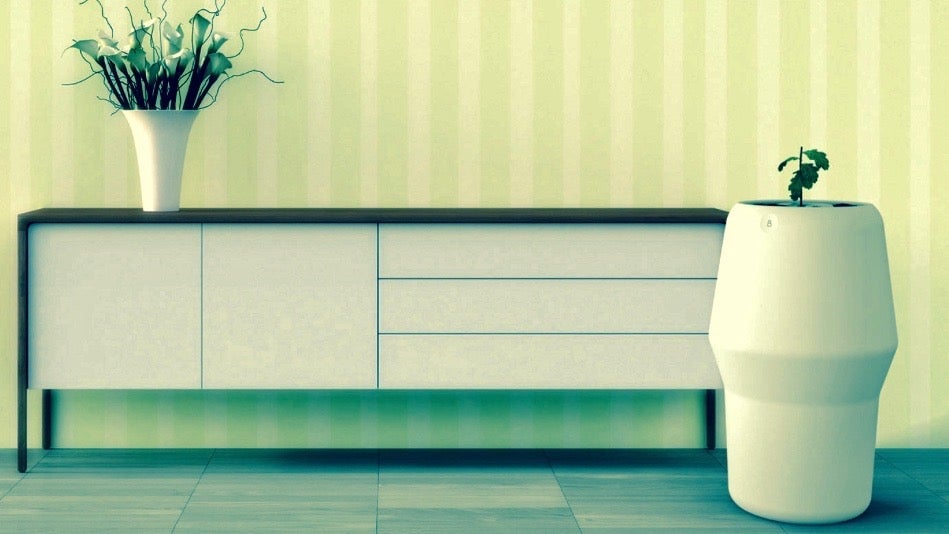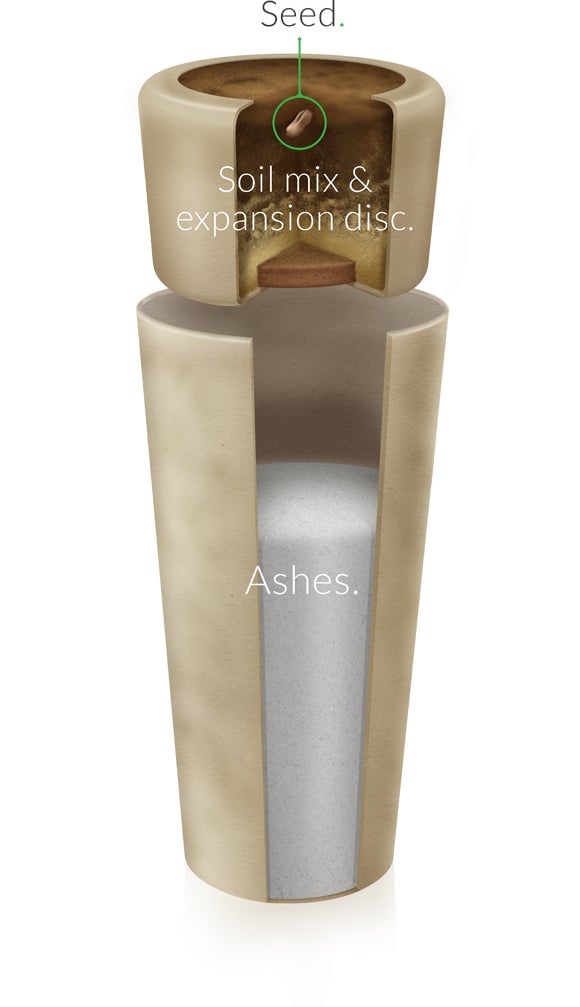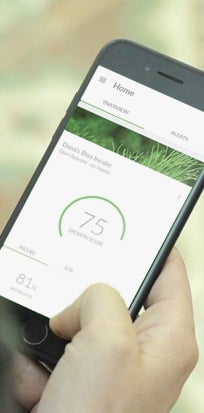Futuristic urns turn death into new life
Gerard and Roger Moline have a lively take on death. The brothers from Barcelona who created Bios, an ecologically friendly cremains transformation company, make products that turn loss into gain and pain into growth. Their biodegradable urns and futuristic incubators sprout pines, redwoods, maples, oaks, and more.


Gerard and Roger Moline have a lively take on death. The brothers from Barcelona who created Bios, an ecologically friendly cremains transformation company, make products that turn loss into gain and pain into growth. Their biodegradable urns and futuristic incubators sprout pines, redwoods, maples, oaks, and more.
Naturally, a garden is where the idea for Bios was first seeded. When Gerard was a child in Spain working with his grandmother on her blooms, they found and buried a dead bird. She sprinkled seeds in the soil where the grave lay, planting an idea in the boy’s mind that would sprout when he became a product designer.

In 1997, Gerard began working on his first transformative urn, making life from death. Eventually, he created a decomposing container for cremains that grows trees with help from ashes of the deceased.
In 2002, a friend planted a prototype in a garden in Barcelona—the princess tree now blossoms yearly, Roger tells Quartz. But it wasn’t until 2013, when he graduated from university, that the brothers created the company.
Bios, headquartered in Barcelona, began by selling its biodegradable urn that breaks down while blending soil, seed, and ashes, then sprouts. It costs about $150 and is planted outside—ashes nourish the soil while the vessel decomposes. Although there are are other biodegradable vessels for cremated remains made of clay or salt that break down in soil or dissolve in the ocean, Bios claims it’s the world’s only maker of a green urn that sprouts.
Soon the brothers saw another need. “After three years of connecting with people who planted the urn, we discovered that a lot of customers were also interested in the growing process, but they don’t have knowledge of trees and wanted help,” Roger explains.
This inspired the Bios Incube—a $450 wifi-enabled planter that comes with the company’s sprouting urn and connections. The incubator is linked to a network, which regulates growth, waters remotely, and allows people to watch cremains transform indoors. After, they can transplant the tree outside if they wish. The “after life incubator” was funded with $85,000 in Kickstarter contributions raised in 2016. Roger says there were 300 orders for the planter before its release at year’s end.

Bios customers are from around the world, according to Roger, the CEO. Most are from the US and Europe, some are in Japan and China, and there’s a growing market in Australia and New Zealand. Products are sold online and through funeral homes and crematoriums, though Roger says the company doesn’t attend funerary industry events because “we aren’t in the business of death.”
Nonetheless, in May, the first dedicated Bios urn space was created in Quebec, Canada at the Cimetière Catholique Granby through a partnership between a local distributor and the cemetery. It is aptly called the Garden of the Tree of Life. The plan is to grow trees where tombstones might otherwise stand, offering a green burial alternative that saves precious space.
Planting trees is arguably better for the planet than traditional burial. It uses fewer materials and nourishes the earth instead of taxing it.
Burial space is scarce worldwide. Toronto may have no room for graves within a decade. In 2013, a study found that within 20 years, half of Britain’s cemeteries will be full—one proposed solution is recycling graves, a routine practice in Germany. In Israel, underground burial tunnels attempt to address shortages. In Hong Kong, ashes are stored in sacks at cemeteries while families await burial space for urns.
Beyond the practical, the biodegradable urns serve a spiritual and symbolic purpose, Roger says. Seeing growths rise from the ashes helps grieving people connect to those they lost through new life.
In Vermont’s Green Mountains, for example, Jay Junker’s father’s cremains sprouted from an urn into a sturdy young oak on the family’s property. Junker believes it’s “a dream come true” for his dad, who loved the land, and it works for him too. “Some people go to church, but I find peace and tranquility and strength in nature,” he says. “In a few years I’ll be able to hang my hammock out there and just swing in the breeze with my dad by my side and watching over me.”